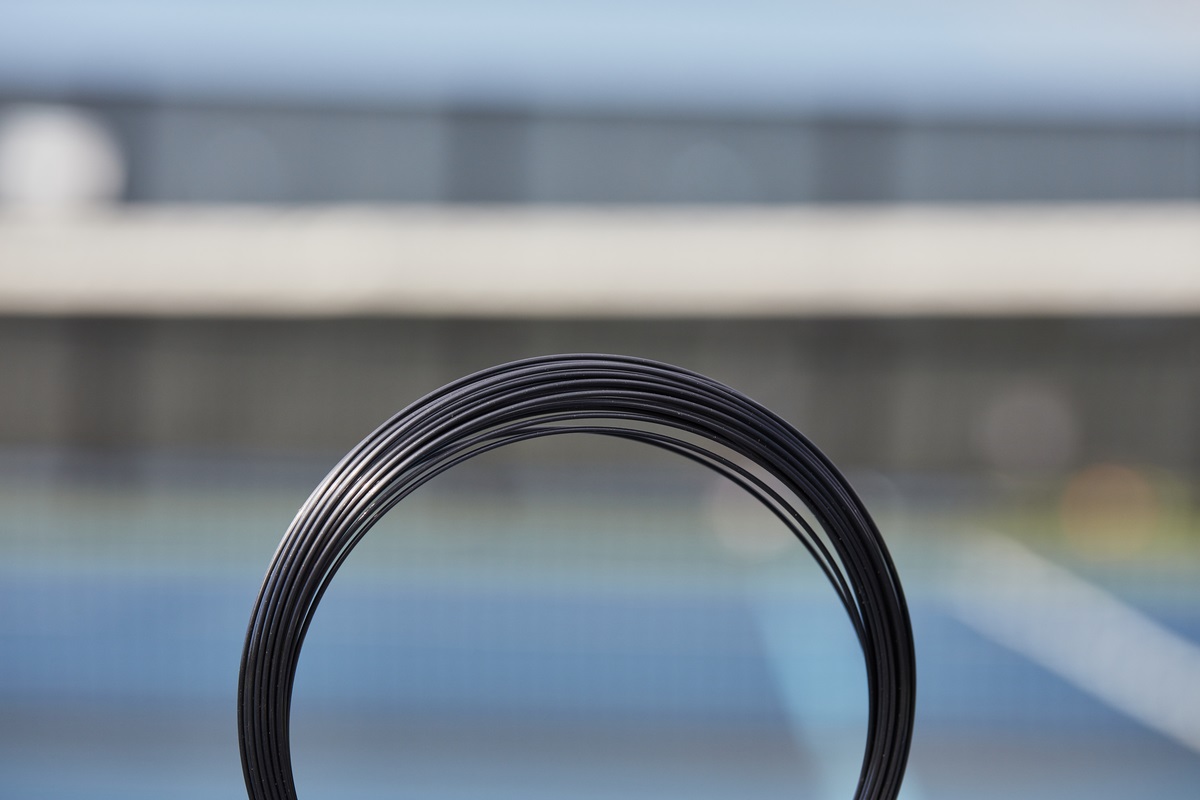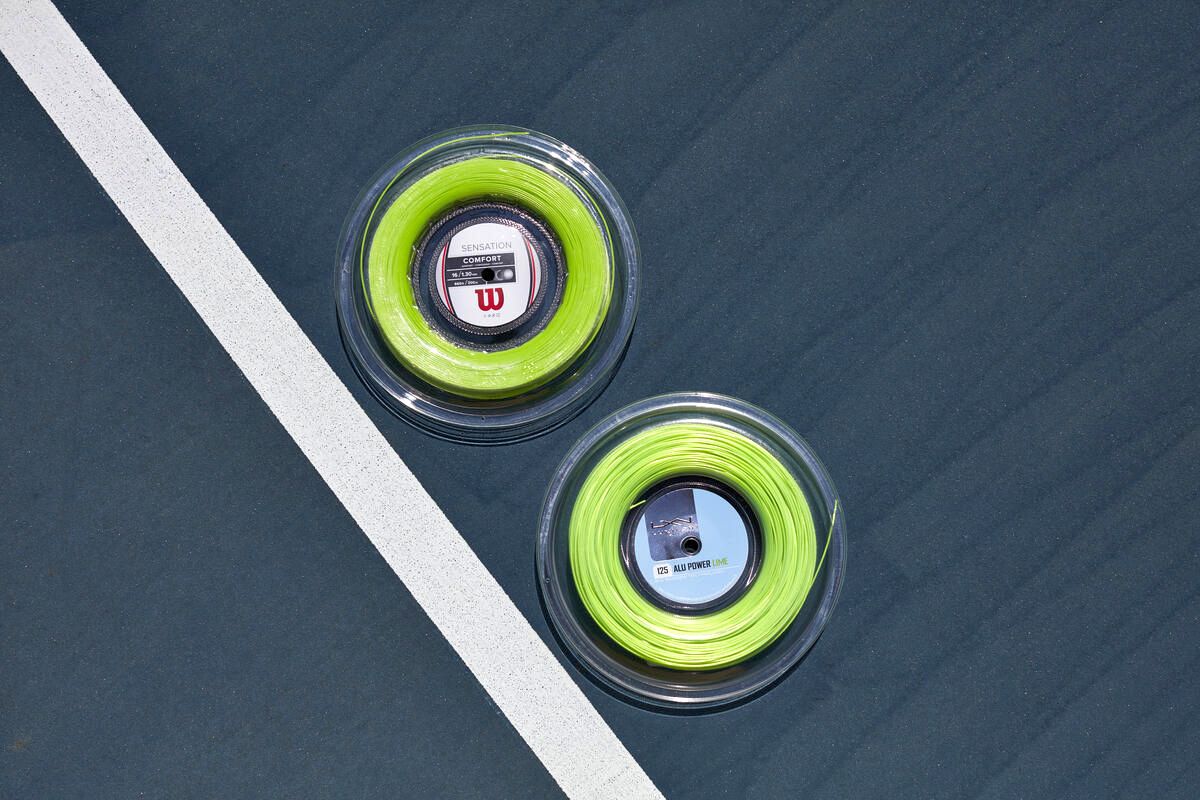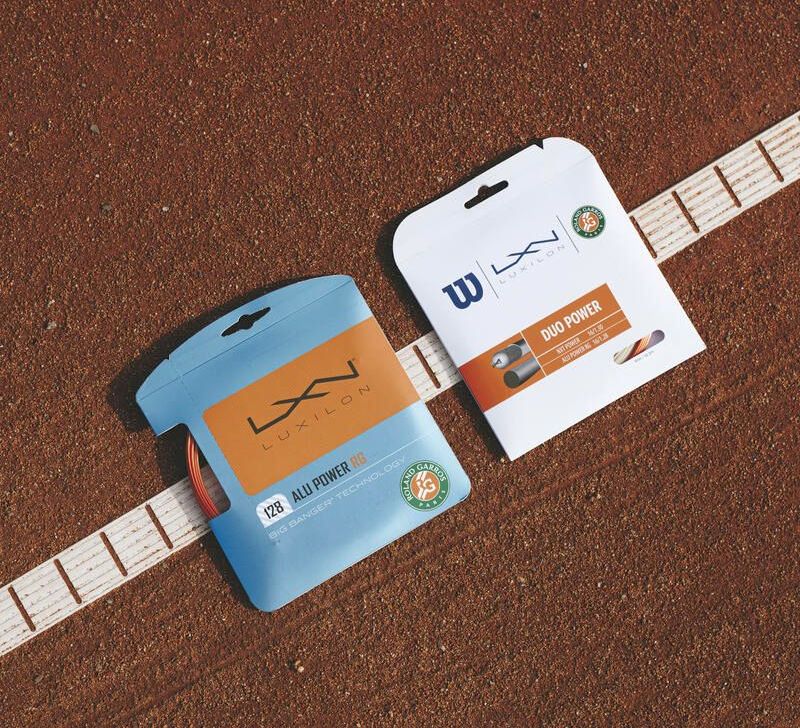How to choose a tennis string?
How to choose a tennis string?
In the tennis world, it is said that the engine of a racquet is the tennis string. There is a lot of truth in this. The type of string and the tension, measured in kilograms (in the range of about 20-30 kg), with which the string is strung will strongly determine how the racquet is played. Nowadays, it is increasingly common to find brand new racquets without strings. The reason for this is that each tennis player should anyway choose the string and choose the tension with which the string should be strung according to his or her own preference. It is often advisable to replace the fabric string (if the racquet has one) with a new one after buying the racquet, because the tension with which the racquet is strung at the factory (and the time which has elapsed since then) may result in the racquet not being played at its best, even if the right string is chosen for the player's skills. The choice of string should be based on its flexibility and thickness. The tensions with which the racquets should be string are usually specified by the manufacturer. This depends primarily on the strength of the racquet frame.

Tennis strings should be changed frequently and regularly. How often the string should be changed depends on the power of the player, the intensity of play, the thickness of the string, the type of ball (heavy balls cause the string to break more quickly), accidentality (a dirty hit right next to the racquet's frame), the humidity of the string (natural strings made of animal gut are particularly sensitive to breaking). As a general rule, string should be replaced at least once a year, even if it has not broken. This is because, during this time, it loses some of its qualities (mainly its elasticity) due to the changes in temperature in which it is placed and the constant tension which, under the influence of play, is considerably reduced during this time. The string is not matched to the racquet. The string is matched to the style of play and to personal preference.
Types of strings
There are different types of strings in terms of the material from which they are made and the structure method. From the point of view of the materials used, a distinction can be made between the least comfortable polyester strings, and the more comfortable, softer synthetic and nylon strings. Among the most comfortable but also very expensive are natural strings, which are also the least durable. From the structural point of view, strings can be divided into monofilament and "multifilament" strings (multifilament - very comfortable with a good combination of playability and durability). In between these extremes, there are different variations: from a core with a single envelope, with multiple envelopes, with an additionally shaped outer envelope (e.g. a cube cross-section shape), to the use of materials from different materials in the same string.
String tension
String tension is important in terms of control and power of stroke, flexibility and durability of the string. A reduction in string tension results in the string dampening vibrations better and becoming more elastic. A "trampoline effect" is created, which simultaneously increases hitting power and decreases control. Increasing the strength causes the opposite reaction.
String gauge
String gauge especially influences the strength and flexibility of the string. It is specified in millimetres and ranges between 1.05-1.4 mm.
String characteristics by thickness:
1. The thicker the string, the more durability it offers, at the expense of power, control, feel and comfort.
2. Thinner strings provide better comfort, feel, control, vibration dampening and stroke power.

Players who like to hit with spin should use thinner strings, because the thinner the string, the easier it is to give the ball a spin. It should be mentioned that the number of strings (string pattern) should be taken into account when choosing the thickness of the string, as thinner strings will be better with more strings.
String playability and durability
Many companies use the labels playability and durability. Unfortunately, the more "playable" a string is (more flexible, comfortable, with good power), the less durable it is. Monofilament, thick polyester strings have the highest durability. Thin multifilaments and natural strings have the greatest "playability". All strings currently available on the market are a combination of these two parameters, and a compromise between playability and durability. There is no string on the market that is complete in terms of playability and durability at the same time.
Rules to follow when choosing new string
1. Thinner strings allow creating more spin.
2. Softer strings dampen vibrations better than stiff strings.
3. Thinner or more flexible strings give more power.
4. With dense stringed pattern, thinner strings will be better.
5. For smaller head sizes, it is better to choose thinner strings.
6. With stiffer frames, very stiff and thick strings are not recommended.
7. Rough strings give the ball more rotation.
8. Stiff monofilament strings increase durability.
9. Multifilament strings are more comfortable but less durable.
10. Soft strings give better power than stiff strings.

11. A dense string pattern in a racket, e.g. 18/20, will increase our control, but will reduce the power of strokes and spin.
12. An open string pattern, e.g. 16/19, will increase the power of strokes and greater spin, but at the cost of less control.
13. Larger racket head size will help increase ball dynamics and spin at the expense of ball control.
14. Higher string tension in racket give more control of the ball, but reduce power, dynamics and spin. It also results in less playing comfort.
15. Lower string tension of the racket reduces ball control. It feels more comforable and more powerful.
16. A thinner string will reflect better on the health of the player as it will absorb more vibrations (these are not transmitted to the player's arm). The downside of reducing the diameter of the string is the adverse effect on its durability..
17. Thicker string will increase durability.
18. A soft string will help us get the playing comfort that is so important for people with "tennis elbow", wrist or shoulder problems. We will also get more power and spin, but at the cost of a higher percentage loss of string tension and therefore durability.
19. Stiffer string will give greater durability at the expense of power and playing comfort.



